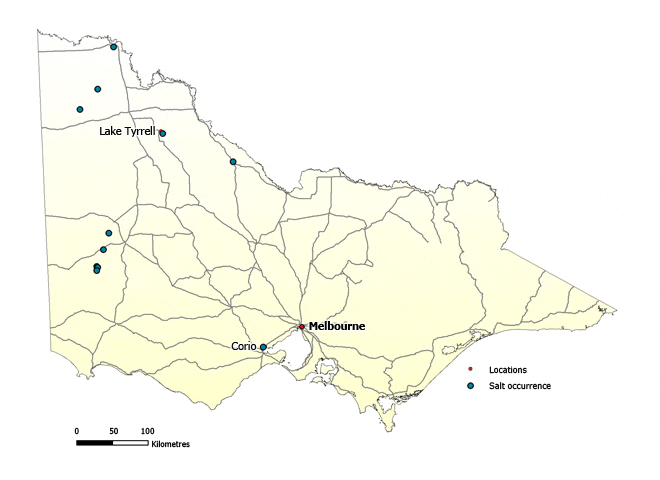Silica

Most of the known commercial silica (SiO2) deposits in Victoria are mineral sands and gravels of Tertiary and Quaternary age. Small deposits of quartz cobbles, orthoquartzites, silcretes and vein quartz have also been worked.
Industries using silica are well established in Victoria. The main use of silica sand in Victoria is in the building industry, as abrasives, ceramics, silex balls, paint additives and ornamental stone. A few high-grade silica sand deposits are currently worked for more specialised purposes, such as for glassmaking and to provide foundry sand. There are major silica sand operations at Lang Lang and Cranbourne.
The Lang Lang deposit is fluviatile and aeolian (dune) sand of Tertiary to Quaternary age. The sand is used mainly for glassmaking and commonly contains small amounts of clay and iron-oxide impurities, which must be removed.
At Cranbourne, a central plant processes sand from an on-site quarry and from other sources, including Lang Lang, to produce foundry sand. Lower-grade material is used as aggregate in plaster, mortar, and concrete manufacture.
There is considerable potential for high-grade silica sand deposits in the Tertiary sequences of the Otway and Gippsland basins.
Quartz cobbles in dumps from deep lead gold mines near Allendale and Amphitheatre in central Victoria have been used as a source of lump silica. This yields a milled product of high chemical purity and whiteness for the manufacture of ceramics, paints, and industrial fillers.
Quartz crystals were mined during the 1940s from the Crystal King Mine near Tallangallook in the Strathbogie Ranges, and used in radio transmitters. A recent resurgence of interest in ornamental quartz crystals has renewed interest in this deposit.
View the full list of minerals
Further information
Industrial minerals and rocks of Victoria - Geological Survey of Victoria Report 102
Geology of Victoria - Geological Society of Australia
Maps
To create your own maps online and in real time, plan exploration activities by viewing land status, or download GIS data to add to your own maps, visit GeoVic.

Page last updated: 12 Jan 2023